

Volume 8
Published on June 2024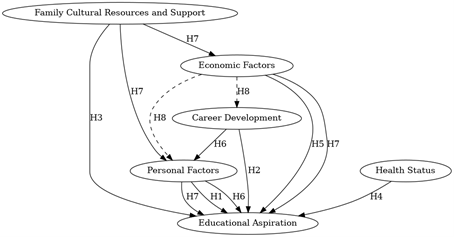
This study aims to explore the key factors influencing Chinese higher vocational students' reluctance to pursue higher education. By combining two analytical methods, Random Forest and Structural Equation Modeling, the study targeted students enrolled in Guangdong Finance and Trade Vocational College, designed a questionnaire containing various aspects such as study habits, self-perception, and internship experience, and collected 107 samples for analysis. The study found that students' personal intention to pursue higher education was the most critical factor influencing whether they chose to continue their studies, followed by the evaluation of their own learning ability and economic considerations. In addition, family cultural resources and learning environment also influence students' attitudes towards further education to a certain extent. The study also reveals the effects of the positive interaction between personal factors and family cultural resources support, and the negative interaction between personal factors and economic factors on the intention to pursue higher education. Based on these findings, the article presents recommendations for the school, family, and social levels to promote higher education students' willingness to pursue higher education and educational equity.

 View pdf
View pdf


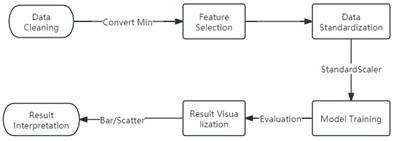
The rapid expansion of comprehensive sports datasets and the successful application of data mining techniques in various domains have given rise to the emergence of sports data prediction techniques. These techniques enable the extraction of hidden knowledge that can significantly impact the sports industry, as more and more clubs are using Machine Learning (ML) and Deep Learning (DL) methods to manage athletes and training. In this research, the focusing and intriguing aspects is predicting the outcomes of a specific basketball athletes, which has garnered significant attention for research. The paper was motivated by a dual interest in college and NBA basketball matches, alongside a keen observation of the evolving strategies employed by coaches in athlete management. Additionally, the interest was further reinforced by firsthand observations of such evolving methods during a baseball game at City Field in New York. These factors collectively underpin the relevance and significance of this research endeavor, highlighting the intersection of personal interest and the evolving landscape of sports management as compelling reasons for its pursuit. In the process of data selection, we acquired data from previously published essays as well as from Kaggle, a reputable online platform. Following this, we proceeded to evaluate several prominent machine learning models, namely Linear Regression, KNN, Gradient Boosting, Elastic Net, and Lasso, to ascertain their effectiveness in predicting the performance of specific players. Through rigorous analysis and comparison, we concluded that Linear Regression and Gradient Boosting exhibited superior predictive capabilities compared to the other models considered. These two models demonstrated a higher degree of accuracy and reliability in forecasting player performance, thus establishing them as the most suitable choices for our predictive modeling purposes. This meticulous selection process, involving both data acquisition and model evaluation, forms the foundation of our research methodology and underscores the rigor and precision with which our conclusions are drawn.

 View pdf
View pdf


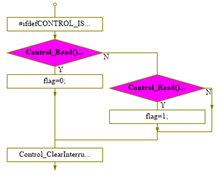
This article primarily discusses how to use PWM, interrupt signals, and timers to create a parkour game. We also need two relatively independent PWMs to produce sounds: one for playing background music in a loop, and the other for playing collision, level completion, and prompt sounds at the end of the game.

 View pdf
View pdf


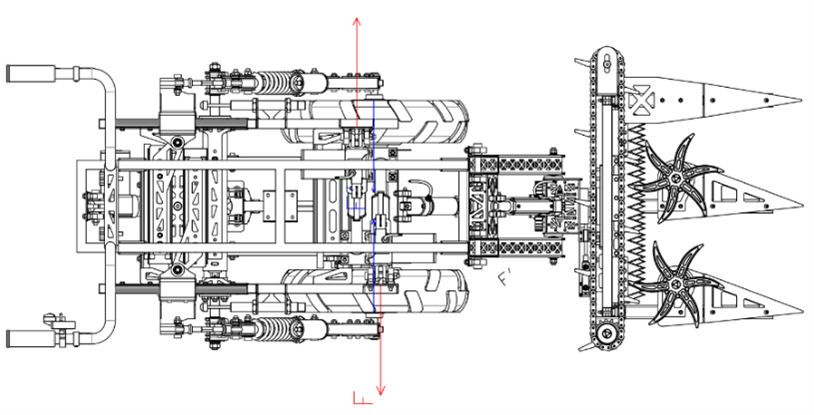
With the development of agricultural modernization, accelerating agricultural mechanization has become an important direction for the development of agriculture in China. However, agricultural mechanization is uneven and insufficient in terms of regions, industries, crop varieties, and production stages. Although there are already a large number of agricultural machinery products on the market, most of them are designed for large-scale crops in northern arid lands, lacking machinery suitable for barley and adaptable to small plots and sloping farmlands in the Qinghai-Tibet Plateau region. The development of a barley harvester adapted to plateau mountainous areas contributes to the development of special agricultural machinery in China, improves the uneven development of agricultural mechanization, and promotes agricultural development in plateau mountainous areas. This paper conducts research on the actual terrain of the Qinghai-Tibet Plateau, barley planting conditions, and harvester operational conditions. Based on the production needs of barley agriculture, the design is optimized and improved. Following the principle of overall coordination, the overall structural parameters of the harvester suitable for the operational requirements of plateau mountainous areas are determined. The structural design of key components such as wheelbase, axle spacing, ground clearance, harvesting mechanical arm, and harvesting mechanism is detailed. Additionally, SolidWorks software is used for three-dimensional modeling of the barley harvester. CAE technology is employed to analyze the static and dynamic performance of critical chassis components, validate theoretical calculations, and confirm final structural parameters. Furthermore, a dynamics characteristic model is established based on the optimized parameters to theoretically analyze the stability of the entire machine and verify whether the designed plateau barley harvester meets field operation requirements. Finally, Bluetooth communication technology is utilized to autonomously design control hardware and software, achieving intelligent control of the machinery.

 View pdf
View pdf



This paper aims to design a news recommendation model based on user preferences to address the issues in recommendation systems under large datasets. Initially, four datasets—click_history, news, news_embedding, and user_predict—were integrated into a single table, followed by data cleaning and feature engineering. Due to the large volume of data, this paper proposes necessary data filtering for the training and testing sets, utilizing temporal data to construct user feature vectors and news feature vectors. One challenge is how to effectively integrate user preferences and news features into the model to avoid overfitting or underfitting. In the model design and building phase, different methods were attempted to merge the information of users and news. Ultimately, the user preference features were processed using a fully connected layer, and the news embedding vectors were handled using an LSTM model. These two data parts were then combined into another fully connected layer, using ReLU as the activation function and CELoss as the loss function. Subsequently, the model's hyperparameters were adjusted and evaluated, achieving favorable model performance. The prediction accuracy for recommending news to users in user_predict was calculated as an evaluation criterion. Finally, this paper proposes directions for generalization and optimization in three aspects: data processing, model design, and experimental design. This includes data processing methods, potential improvements or mechanisms that could be incorporated into the model, and hyperparameter tuning. The paper primarily proposes data filtering to solve the problem of excessive data scale, which may aid in addressing recommendation system issues under large-scale datasets.

 View pdf
View pdf


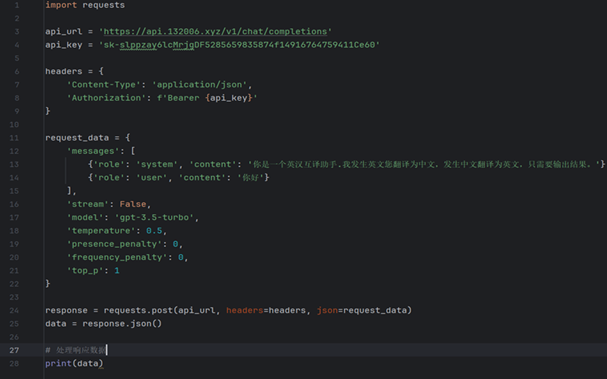
This paper conducts research on data intelligent generation and analysis based on the ChatGPT model. To explore ChatGPT's performance and limitations in machine translation tasks, the concepts of the Transformer model and previous studies were reviewed to gain a deep understanding of the principles and roles of components such as attention mechanisms, encoders, decoders, and word embeddings. By controlling ChatGPT through code for machine translation and performing manual verification, the model's limitations in handling synonyms, technical terms, and specific domain languages were identified.

 View pdf
View pdf



This project aims to construct a knowledge graph system applied to the field of traditional Chinese medicine (TCM) by extracting entities (such as drugs, diseases, etc.) and their relationships from TCM medical case data and storing them in a Neo4j database. The project process includes data reading, entity recognition and extraction, data formatting, and data import into the database. The project not only improved the individual's proficiency in Python data processing techniques (including regular expressions and JSON parsing) but also enhanced their skills in knowledge graph construction and database operations. In the future, there is a desire to further improve technical capabilities, explore more cutting-edge technologies in the TCM field, and promote project progress through collaboration, contributing to the modernization of TCM and intelligent healthcare services.

 View pdf
View pdf


As a leading industry of low-altitude economy and an emphasis area of consumer goods trade-in, in recent years, the Unmanned Aircraft System (UAS) industry has successively received the attention of the Standardization Administration of the P.R.C, the State Administration for Market Regulation and other departments, which have all emphasized the importance of giving full play to the leading role of standards. Up to now, the construction of China's UAS standard system has made great progress, and 126 key standards that are urgently needed by the market and support supervision have been formulated and revised in a timely manner, but the following problems still exist: the standard terminology is not yet unified, the way of prioritizing the formulation and revision is too simple, the content of the standard system is still imperfect, and there is a lack of a unified public service platform for standard information. In order to solve these problems, this paper combines the new international standardization construction experience of the European, the United States and other countries, and puts forward the corresponding optimization ideas for the construction of the UAS standard system, so as to promote the healthy and orderly development of the UAS industry.

 View pdf
View pdf




